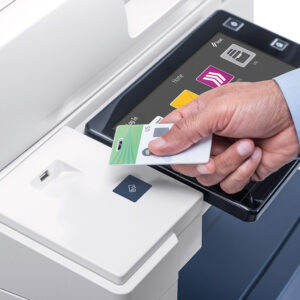Has your business been impacted by a cyber attack?
During 2022, 39% of UK businesses identified and reported a cyber attack on their company. These attacks ranged from common phishing attempts to sophisticated attacks such as a denial of service, malware, or ransomware attacks.
A significant portion of these businesses reported substantial financial losses within their organisations, due to these cybersecurity breaches. Specifically, one-third of surveyed organisations incurred losses ranging from £100,000 to £499,999 as a direct consequence. These findings come at a crucial juncture, with cyber attacks witnessing a noticeable uptick in frequency and sophistication.
The escalating capabilities of hackers, who continually leverage advanced technologies to enhance the intricacy of their attacks, emphasizes the critical need for businesses to enhance their IT security measures. In light of these evolving threats, organisations are urged to prioritise and enhance their cybersecurity efforts. They need to safeguard against potential financial and reputational damage.

How do hackers access your IT infrastructure?
As well as malware and phishing attempts, which are more widely known, there are also lesser known ways of accessing your infrastructure. Cybercriminals often look for previously unknown vulnerabilities in software or hardware that can be exploited before developers can patch them. The integration of modern technologies into office environments presents significant opportunities for hackers to operate. A substantial portion of these devices exhibit a notable lack of fundamental security features.
This issue assumes greater importance in instances where manufacturers neglect to rectify these vulnerabilities, and when users fail to implement essential updates.
IoT devices, which are integral to many modern offices, often possess limited processing and storage capabilities when compared to traditional computing systems. This constraint poses challenges in the installation of robust security applications such as antivirus software.
A substantial number of older models of IoT devices were not originally engineered with security considerations. This renders them incapable of receiving remote updates. Additionally, many businesses do not have security processes and procedures to monitor certain IoT devices. These devices could be printers, cameras, or television monitors. Concurrently, cybercrime has evolved to make it more accessible and cost-effective for hackers to acquire tools that facilitate high-volume, low-complexity attacks. These tactics are exceptionally effective at infiltrating a multitude of inadequately protected devices such as those mentioned above.
The following is a well known example of a cyber security incident…
In 2019, cyber actors acquired data from a North American casino by compromising an internet-connected fish tank. The fish tank had sensors connected to a computer, which monitored the temperature, food, and cleanliness of the fish tank. The cyber actor was able to compromise the fish tank, gain access to other areas of the network through lateral movement, and steal data. The lesson here is anything within a business environment or home for that matter is vulnerable.
How can you ensure your IoT devices are more secure?
At Xerox security is of high priority. We understand that the impact of a cyber attack can be detrimental to businesses of any size. At Xerox we know a high volume of attacks can come from devices such as printers.
Printers and multifunction printers (MFPs) are equipped with several secure print features to protect your organisation’s most sensitive data. Some of these features are shown below:
- Documents are not released until the right user is at the device and scanned information is protected from unauthorised users.
- Xerox also protects stored information, using the highest levels of encryption.
- Processed or stored data that is no longer required can be deleted using National Institute of Standards and Technology (NIST) and U.S. Department of Defense approved data clearing and sanitisation algorithms.
Xerox software and apps ensure digital data is safeguarded as you share it via the cloud and mobile devices.

What should you do to prevent a cyber attack?
If you’re concerned about a security breaches or cyber attack that could arise from your IoT devices, contact us at DWS to find out more about how our Xerox devices can help your business.
01444 462980
info@dwsl.co.uk


